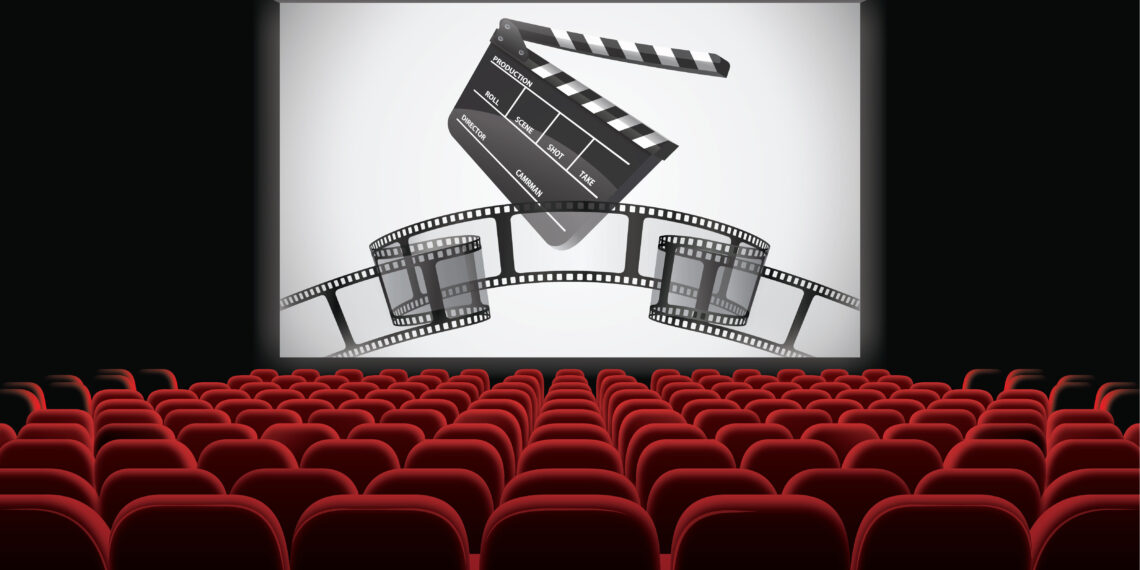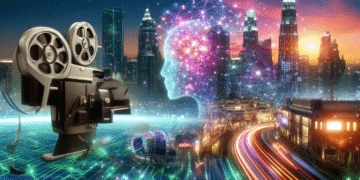The Vibrant World of Bollywood: Cultural Impact and Cinematic Innovations
Bollywood, India’s Hindi-language film industry, extends far beyond entertainment, shaping cultural norms and pushing cinematic boundaries with its unique storytelling and musical traditions. It reflects and influences Indian society, reaching a global audience.
| Aspect | Description | Example | Data Source, Year |
|---|---|---|---|
| Annual Film Output | Number of films produced annually, showcasing Bollywood’s prolific nature. | Approximately 1,600 films produced in 2024 | Film Federation of India, 2024 |
| Global Box Office Revenue | Total earnings of Bollywood films worldwide. | Estimated $3 billion in 2024 | Ernst & Young, 2024 |
| Key Export Markets | Countries where Bollywood films are most popular. | UAE, USA, UK, Australia, Canada | KPMG, 2025 |
| Digital Consumption Growth | Increase in online streaming and viewership of Bollywood content. | 25% increase in streaming hours on major platforms in 2024 | Deloitte, 2024 |
| Social Media Engagement | Metrics indicating audience interaction with Bollywood stars and film promotions. | Average of 500 million interactions per month on Instagram for top stars | Statista, 2025 |
Data Source:Film Federation of India, Ernst & Young, KPMG, Deloitte, Statista,2024-2025
1. Cultural Reflection and Influence
Bollywood films often mirror societal values, traditions, and contemporary issues. They address themes such as family dynamics, love, social justice, and national identity, resonating deeply with Indian audiences. Furthermore, Bollywood influences fashion, language, and lifestyle trends, shaping cultural discourse and reinforcing or challenging existing norms. The films serve as a powerful medium for disseminating cultural messages and promoting social change.
2. Musical Innovations and Song-and-Dance Sequences
A hallmark of Bollywood is its elaborate song-and-dance sequences, which are integral to the narrative. These sequences blend traditional Indian music and dance forms with modern styles, creating a unique aesthetic. Composers and choreographers constantly innovate, incorporating diverse musical genres and dance techniques. Bollywood music enjoys immense popularity, often transcending geographical boundaries and contributing significantly to the industry’s revenue.
3. Technological Advancements and Genre Diversification
Bollywood is increasingly embracing new technologies, including visual effects, animation, and advanced camera techniques, to enhance the cinematic experience. While romance and drama remain popular genres, there is a growing trend towards experimentation with action, thriller, horror, and science fiction. This diversification caters to evolving audience preferences and reflects a desire to compete with international cinema standards.
Japanese Cinema: A Journey Through Tradition and Modernity
1. The Golden Age and Akira Kurosawa
The mid-20th century marked the golden age of Japanese cinema, with Akira Kurosawa emerging as a global icon. His samurai epics, like “Seven Samurai” (1954) and “Yojimbo” (1961), showcased breathtaking action sequences and profound moral themes. Kurosawa’s influence extended far beyond Japan, inspiring filmmakers worldwide and popularizing Japanese cinema on an international stage. His films often explored themes of honor, duty, and the human condition, resonating with audiences across cultures.
2. Anime: A Global Phenomenon
Japanese animation, or anime, has evolved into a significant cultural and economic force. Studios like Studio Ghibli, with directors such as Hayao Miyazaki, have created timeless classics like “Spirited Away” (2001) and “My Neighbor Totoro” (1988), captivating audiences with their imaginative worlds and heartwarming stories. Anime’s diverse genres and artistic styles have garnered a massive global following, influencing animation trends and inspiring artists worldwide. Its popularity continues to grow, driven by streaming platforms and international collaborations.
3. Contemporary Japanese Cinema
Contemporary Japanese cinema showcases a wide array of genres and styles, from thought-provoking dramas to innovative experimental films. Directors like Hirokazu Kore-eda, known for his poignant family dramas such as “Shoplifters” (2018), have garnered international acclaim for their nuanced storytelling and social commentary. The industry also embraces genre films, including horror, science fiction, and action, often blending traditional elements with modern filmmaking techniques. This diversity ensures that Japanese cinema remains relevant and engaging for audiences both at home and abroad.
The Korean Wave: Redefining Global Entertainment Landscapes
1. The Rise of K-Pop
K-Pop’s global appeal stems from catchy melodies, synchronized choreography, and highly produced music videos. Groups like BTS and BLACKPINK have broken records and amassed huge international fanbases, utilizing social media platforms to connect with audiences worldwide. This connectivity has fostered a sense of community among fans and propelled K-Pop into mainstream music charts, demonstrating its significant impact on the global music industry. The genre’s influence extends beyond music, impacting fashion and lifestyle trends.
2. K-Dramas and Streaming Platforms
Korean dramas, or K-Dramas, have gained immense popularity through streaming platforms like Netflix and Viki. Their diverse storylines, high production values, and compelling characters resonate with viewers globally. Historical dramas, romantic comedies, and thrillers have all found international success, showcasing the versatility of Korean storytelling. The accessibility offered by streaming services has been crucial in expanding the reach of K-Dramas beyond Asia.
3. Korean Cinema’s Global Recognition
Korean cinema has achieved critical acclaim and commercial success on the global stage. Films like “Parasite” winning Best Picture at the Academy Awards have highlighted the talent and creativity of Korean filmmakers. The industry’s willingness to experiment with different genres and themes has contributed to its international recognition. Korean films often tackle social issues and explore complex characters, resonating with audiences seeking thought-provoking and engaging stories..
Iranian New Wave: Artistic Expression and Societal Reflections
The Iranian New Wave, emerging in the 1960s, revolutionized Iranian cinema by shifting away from commercial genres and embracing artistic expression to reflect societal realities. It provided a platform for exploring complex themes with poetic narratives.
1. Key Characteristics and Influences
The Iranian New Wave is characterized by its neorealist aesthetics, focusing on everyday life and social issues. Influenced by Italian Neorealism and French New Wave, it adopted a more personal and poetic approach to filmmaking. Common themes included poverty, social injustice, and the struggles of ordinary people. Directors often used non-professional actors to enhance the authenticity of their stories.
2. Prominent Filmmakers and Their Contributions
Key figures like Abbas Kiarostami, Dariush Mehrjui, and Mohsen Makhmalbaf played pivotal roles in shaping the movement. Kiarostami’s minimalist style and focus on children’s perspectives gained international acclaim. Mehrjui’s “The Cow” (1969) is often cited as a seminal work, exploring rural life and the bond between a farmer and his cow. Makhmalbaf’s films tackled political and social issues with a blend of realism and allegory.
3. Societal Reflections and Censorship
The Iranian New Wave served as a mirror reflecting the complexities of Iranian society. Filmmakers often navigated censorship by using symbolism and subtle narratives to critique social and political conditions. The movement provided a platform for marginalized voices and challenged conventional norms. Despite facing restrictions, these filmmakers found creative ways to express their views and engage with audiences.
European Art House: The Intersection of Creativity and Philosophy
European art house cinema often transcends mere entertainment, serving as a profound exploration of the human condition and philosophical concepts. These films frequently challenge conventional narrative structures and visual aesthetics, inviting viewers to engage with complex themes.
1. Auteur Theory and Personal Expression
A key characteristic of European art house cinema is the emphasis on the director as auteur. This theory posits that the director is the primary creative force behind a film, imbuing it with their unique vision and personal style. Directors like Ingmar Bergman and Federico Fellini used cinema to explore their own anxieties, beliefs, and artistic sensibilities, creating highly personal and introspective works. Their films often serve as visual essays, reflecting on existential questions and the complexities of human relationships.
2. Philosophical Themes and Existentialism
Many European art house films delve into profound philosophical themes, particularly those related to existentialism. These films grapple with questions of meaning, purpose, and the nature of reality. Directors like Andrei Tarkovsky explored spiritual themes and the search for transcendence, while others examined the absurdity of life and the alienation of individuals in modern society. These films often leave viewers contemplating their own place in the world and the fundamental questions of human existence.
3. Challenging Narrative Conventions
European art house cinema often rejects traditional Hollywood narrative structures, embracing ambiguity and non-linearity. Films may feature open endings, unconventional editing techniques, and dreamlike sequences that blur the line between reality and fantasy. This deliberate disruption of conventional storytelling encourages viewers to actively participate in the construction of meaning, rather than passively receiving a pre-packaged narrative. It prioritizes artistic expression and intellectual engagement over simple entertainment.
African Cinema: Narratives of Identity and Transformation
African cinema serves as a powerful medium for exploring cultural identity, challenging colonial legacies, and depicting social and political transformations across the continent. It offers unique perspectives often marginalized in mainstream global cinema.
1. Decolonizing the Screen
African filmmakers are actively engaged in decolonizing the screen by reclaiming narratives and challenging stereotypical representations. They aim to portray authentic African experiences, histories, and cultures, often using local languages and drawing inspiration from traditional storytelling methods. These films serve as counter-narratives to colonial perspectives that have historically dominated the representation of Africa.
2. Exploring Social and Political Issues
Many African films tackle pressing social and political issues such as poverty, corruption, inequality, and conflict. Through compelling storytelling, they shed light on the realities faced by communities across the continent, prompting dialogue and raising awareness about these critical challenges. These narratives often reflect the struggles for social justice and the pursuit of a better future.
3. Celebrating Cultural Diversity
African cinema celebrates the continent’s rich cultural diversity, showcasing a wide range of traditions, languages, and artistic expressions. Films often explore themes of identity, belonging, and the complexities of navigating cultural heritage in a rapidly changing world. By highlighting these diverse perspectives, African cinema promotes intercultural understanding and appreciation.
Q&A
Question 1: What are the key aspects defining Bollywood’s success and cultural impact, and what data supports these claims?
Answer: Bollywood’s success is multifaceted. High annual film output (approximately 1600 in 2024, according to the Film Federation of India), substantial global box office revenue (estimated $3 billion in 2024, per Ernst & Young), and significant digital consumption growth (25% increase in streaming hours in 2024, Deloitte) all contribute. Furthermore, its influence on Indian culture and its strong social media engagement (500 million average monthly interactions on Instagram for top stars, Statista) demonstrate its deep cultural impact and widespread reach.
Question 2: How does Bollywood’s music and dance integrate into its narrative and contribute to its global appeal?
Answer: Elaborate song-and-dance sequences are integral to Bollywood narratives, blending traditional Indian forms with modern styles. This unique aesthetic, constantly innovated by composers and choreographers, contributes significantly to the industry’s revenue and transcends geographical boundaries, enhancing its global popularity. The music’s popularity often extends beyond the films themselves.
Question 3: Beyond traditional genres, how is Bollywood evolving and adapting to changing audience preferences and global competition?
Answer: Bollywood is embracing technological advancements like visual effects and animation. While romance and drama remain popular, there’s a growing trend toward action, thriller, horror, and science fiction genres. This diversification reflects a desire to compete with international cinema and cater to evolving audience tastes, ensuring its continued relevance.






